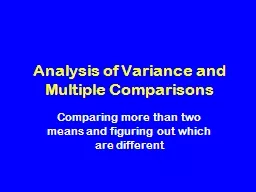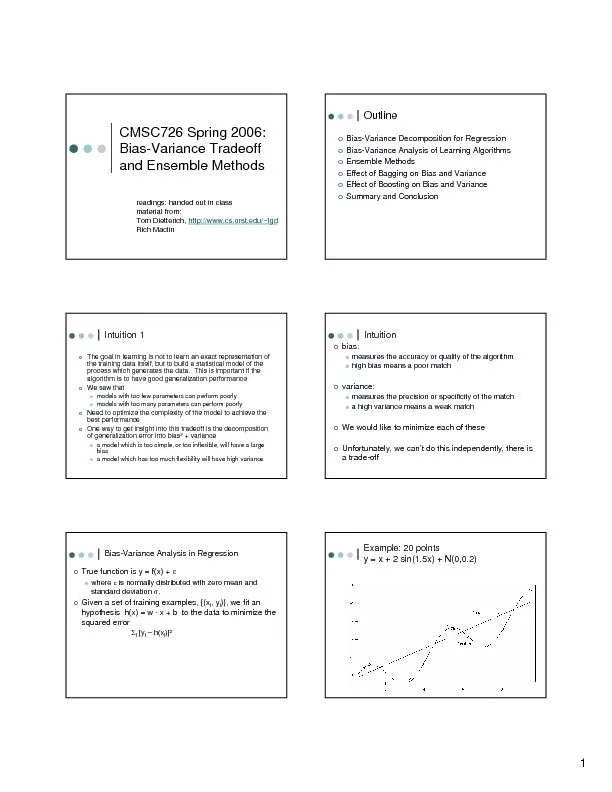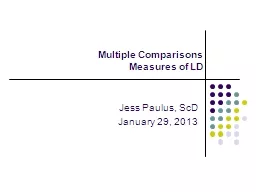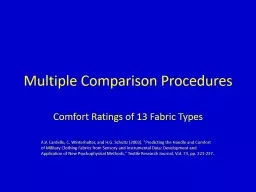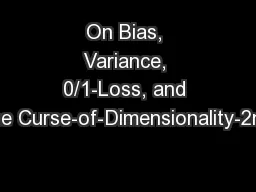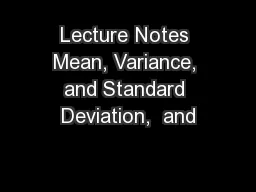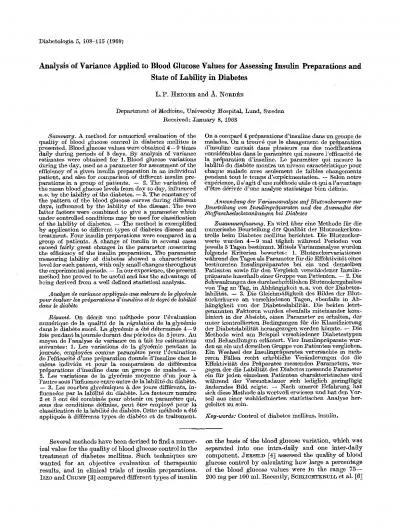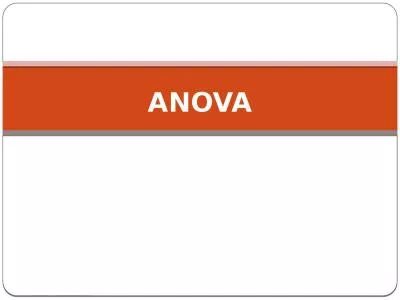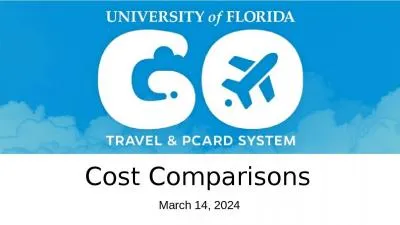PPT-Analysis of Variance and Multiple Comparisons
Author : sherrill-nordquist | Published Date : 2016-03-05
Comparing more than two means and figuring out which are different Analysis of Variance ANOVA Despite the name the procedures compares the means of two or more groups
Presentation Embed Code
Download Presentation
Download Presentation The PPT/PDF document "Analysis of Variance and Multiple Compar..." is the property of its rightful owner. Permission is granted to download and print the materials on this website for personal, non-commercial use only, and to display it on your personal computer provided you do not modify the materials and that you retain all copyright notices contained in the materials. By downloading content from our website, you accept the terms of this agreement.
Analysis of Variance and Multiple Comparisons: Transcript
Download Rules Of Document
"Analysis of Variance and Multiple Comparisons"The content belongs to its owner. You may download and print it for personal use, without modification, and keep all copyright notices. By downloading, you agree to these terms.
Related Documents

